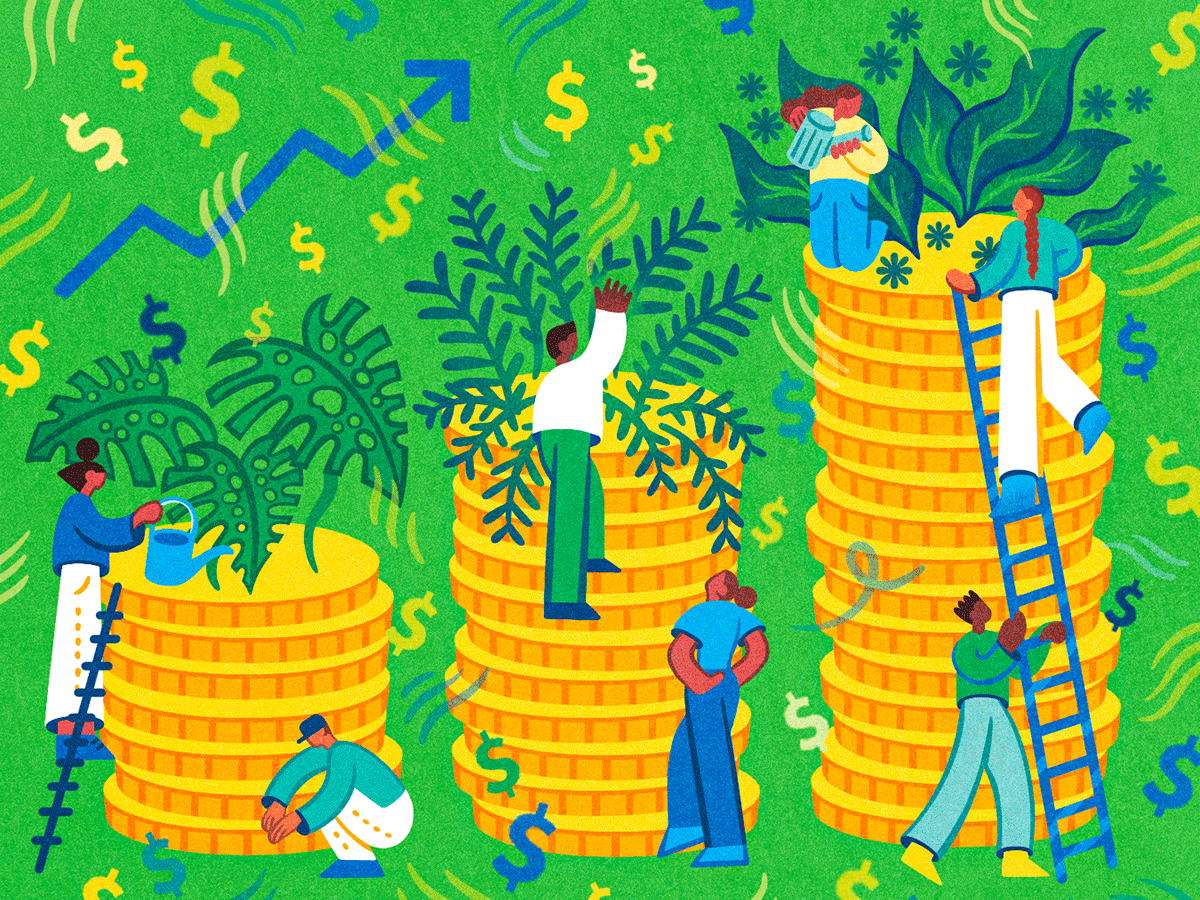What Is Impact Investing, and Is It Right for Me?

Not sure what to do with your money? Let your moral compass guide you.
With increased awareness on issues like climate change and social injustice, many investors are now concerned about where their money goes. One option being explored is something called impact investing, which means aligning your moral compass with your investments.
“More and more people realize the futility of investing in businesses that create or exacerbate social and environmental problems [globally],” says Bonnie Foley-Wong, author of Integrated Investing and founder of Pique Ventures, an investment firm that specializes in impact investing. “They are motivated by purpose in other aspects of their lives—like their work and purchasing decisions—and have realized that they can make purpose-driven investments, too.”
Impact investors choose organizations that have a good impact on the world. And in recent years, millennials and women have been at the forefront of the shift to ethical investing.
Here’s how to determine if it’s a strategy that’s right for you.
ESG versus SRI: What’s the difference?
Socially responsible investing (SRI) and environmental social governance (ESG) investing are two different approaches to impact investing.
The three basic measurable principles of ESG investing are the impact on the environment, social impact and governance (a company’s overall leadership). “Look for companies that are at the very least doing no harm and at the very best improving the planet through their products and services,” says Marissa Bronfman, the former chief brand officer at Kizmet Impact Capital, an impact investment fund.
SRI investing goes further by actively excluding or selecting investments based on certain ethical principles. It’s a strategy that’s unique to each investor. For example, gender-lens investing integrates gender analysis into decision-making. Before becoming associated with a company, investors assess that company’s commitment to having more women in executive roles, and how well they score on pay equity and other workplace practices that benefit women, like generous paid leave.
How can I measure the impact?
Beyond the risk of not earning the desired return or losing money, which is part of any investment, impact investors consider risk over a longer period of time, and the impact of a decision on future generations. Impact investors also think about who is taking on disproportionate risk—for example, whether the risk has been passed to employees, suppliers, customers or communities. This might exclude a company that engages in questionable business practices or profits from a trade in weapons.
How do I identify legit impact investing from marketing hype?
It’s hard to invest ethically when you’re unsure where to find trustworthy information. There is the risk of investing in a company that is greenwashing, for instance. “A company can use environmental language or environmental colours to position their product or service as something good for people and the planet,” explains Bronfman.
To familiarize yourselves with impact investing, start following accounts on social media such as @mymeaningfulmoney, @janinerogan, @bonnieowong or @financeforchange. You could investigate companies whose products you already use to see if they offer investment opportunities. Bronfman encourages everyone to do their due diligence on industries and companies.
There are also publicly available impact-oriented resources, like the sustainable development goals from the United Nations. Third-party rating agencies also offer ESG ratings, but they can vary dramatically, so use them with other metrics.
Developing an impact investment strategy sounds complicated, but Foley-Wong believes that a lot of it comes down to your priorities. To start, you can “dedicate a small portion of your disposable income to investing and then make sure it aligns with your values,” says Bronfman.
Remember that impact investing is about doing the right thing in the long term, not for a quick buck. But the returns will be even sweeter when you know they’re aligned with constructive, positive change.
Next: I Had $1.11 in Savings. Here’s How I Improved My Relationship With Money




